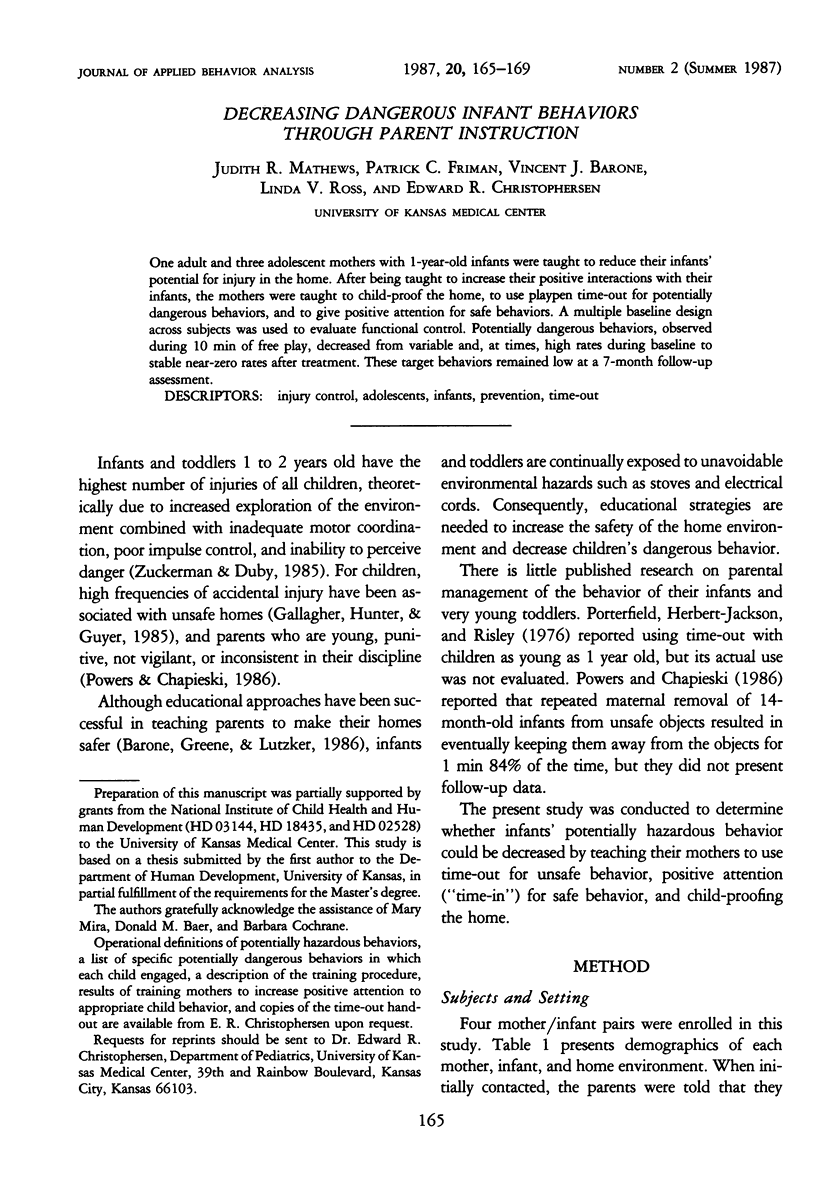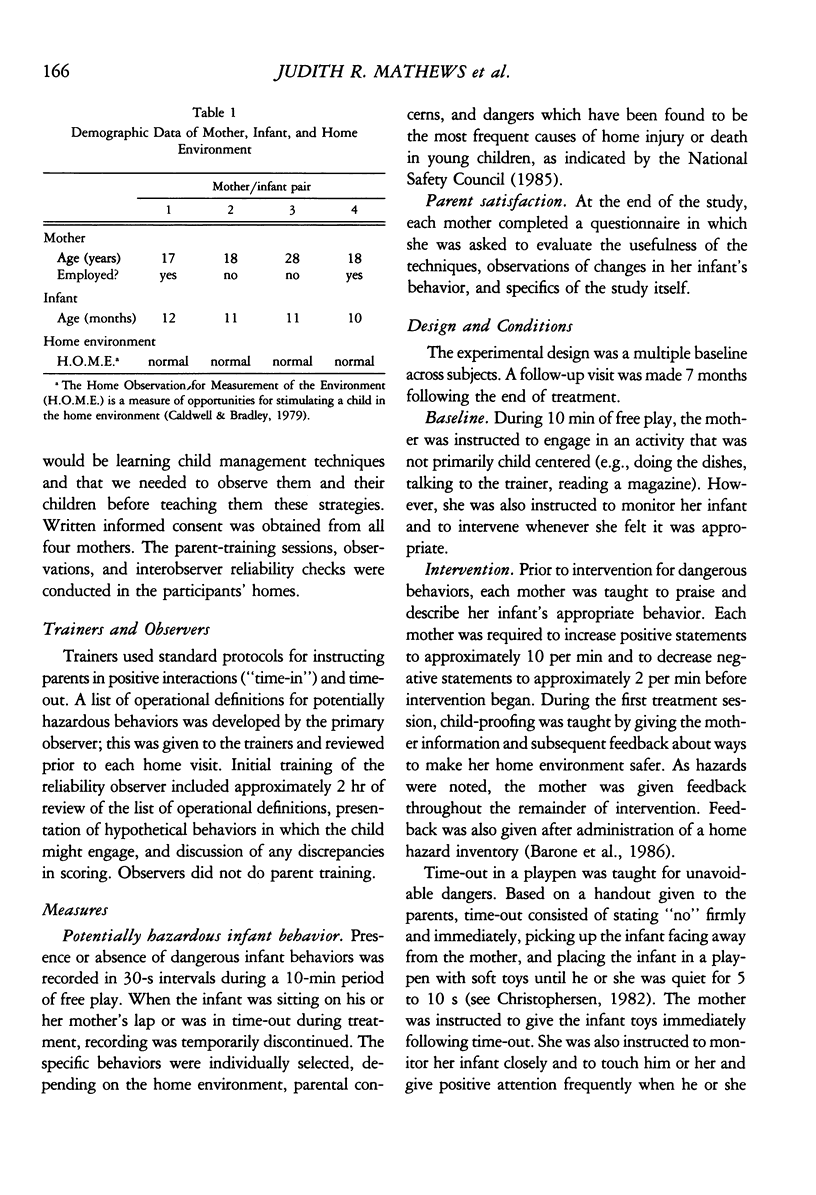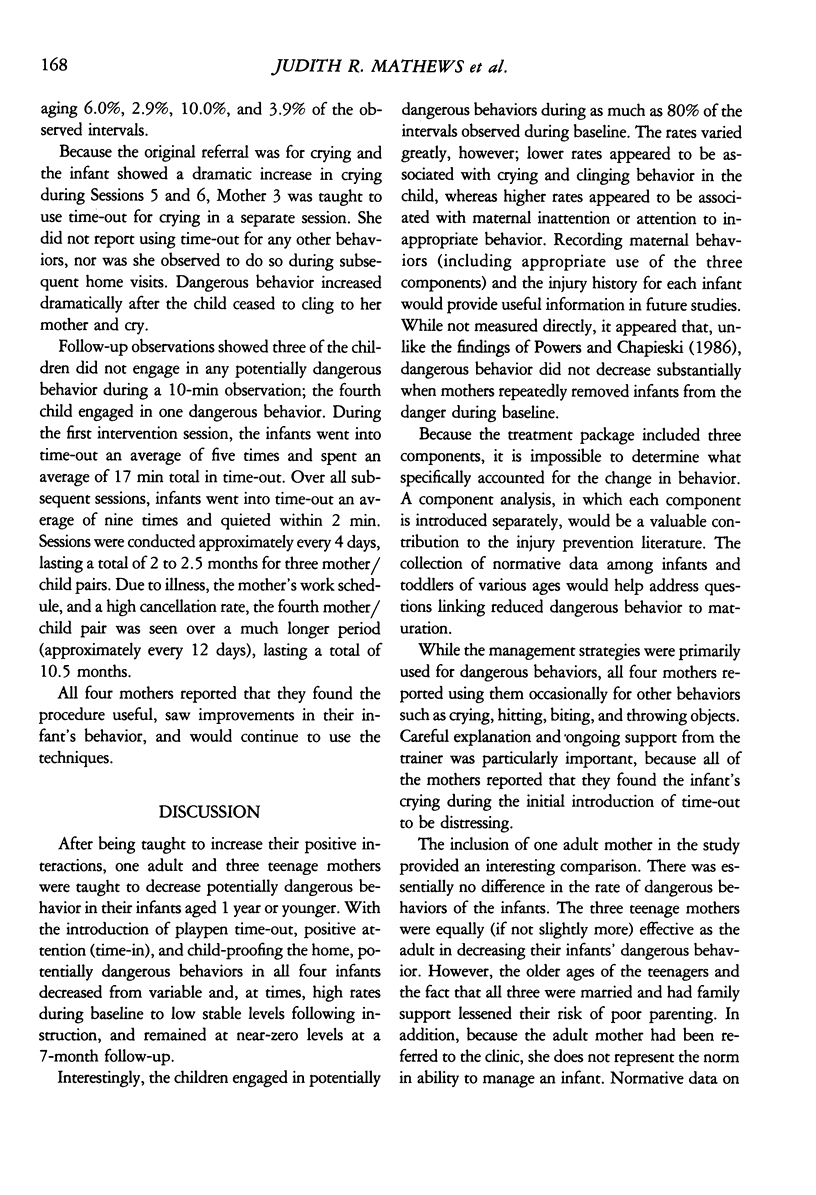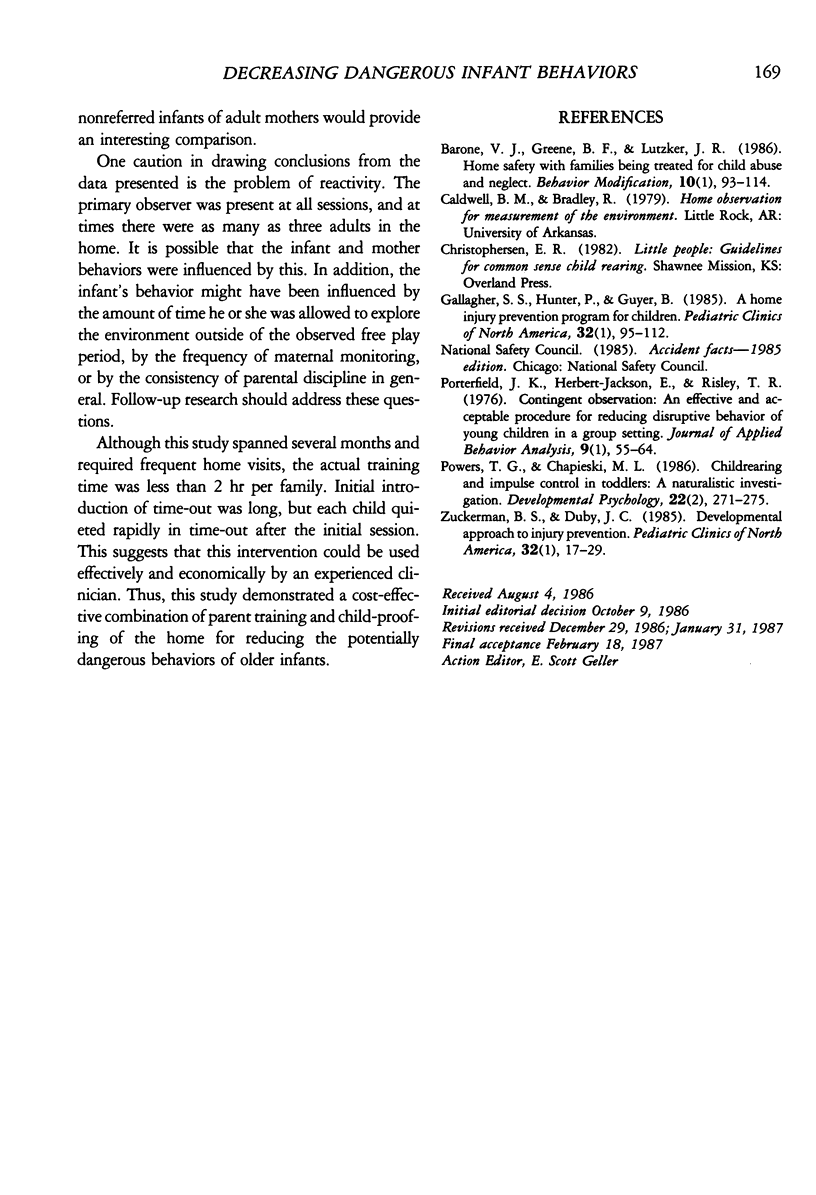Abstract
One adult and three adolescent mothers with 1-year-old infants were taught to reduce their infants' potential for injury in the home. After being taught to increase their positive interactions with their infants, the mothers were taught to child-proof the home, to use playpen time-out for potentially dangerous behaviors, and to give positive attention for safe behaviors. A multiple baseline design across subjects was used to evaluate functional control. Potentially dangerous behaviors, observed during 10 min of free play, decreased from variable and, at times, high rates during baseline to stable near-zero rates after treatment. These target behaviors remained low at a 7-month follow-up assessment.
Full text
PDF




Selected References
These references are in PubMed. This may not be the complete list of references from this article.
- Barone V. J., Greene B. F., Lutzker J. R. Home safety with families being treated for child abuse and neglect. Behav Modif. 1986 Jan;10(1):93–114. doi: 10.1177/01454455860101006. [DOI] [PubMed] [Google Scholar]
- Gallagher S. S., Hunter P., Guyer B. A home injury prevention program for children. Pediatr Clin North Am. 1985 Feb;32(1):95–112. doi: 10.1016/s0031-3955(16)34759-9. [DOI] [PubMed] [Google Scholar]
- Porterfield J. K., Herbert-Jackson E., Risley T. R. Contingent observation: an effective and acceptable procedure for reducing disruptive behavior of young children in a group setting. J Appl Behav Anal. 1976 Spring;9(1):55–64. doi: 10.1901/jaba.1976.9-55. [DOI] [PMC free article] [PubMed] [Google Scholar]
- Zuckerman B. S., Duby J. C. Developmental approach to injury prevention. Pediatr Clin North Am. 1985 Feb;32(1):17–29. doi: 10.1016/s0031-3955(16)34753-8. [DOI] [PubMed] [Google Scholar]


